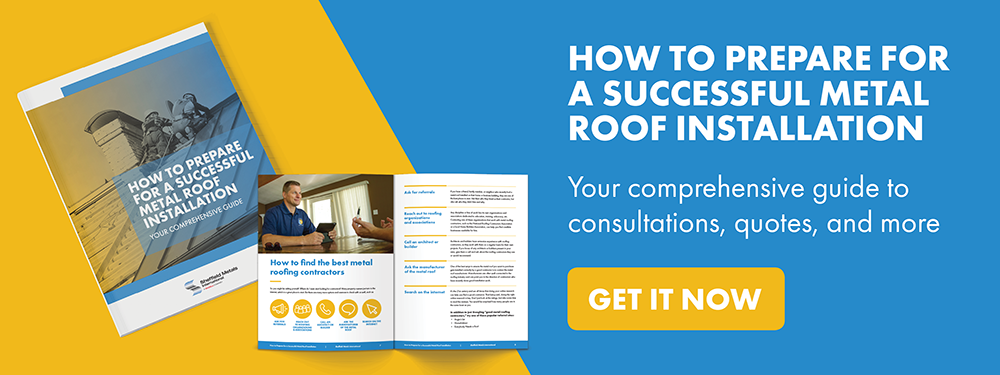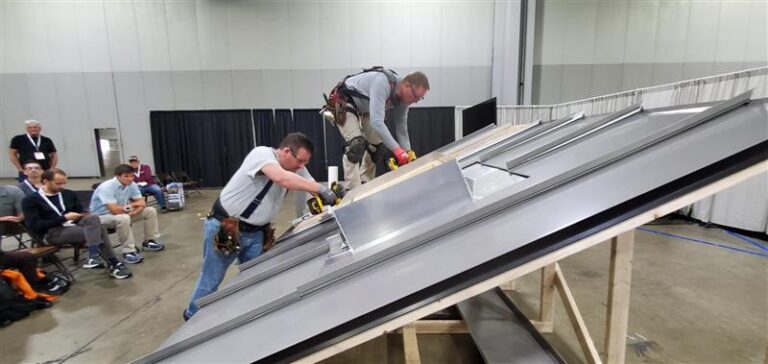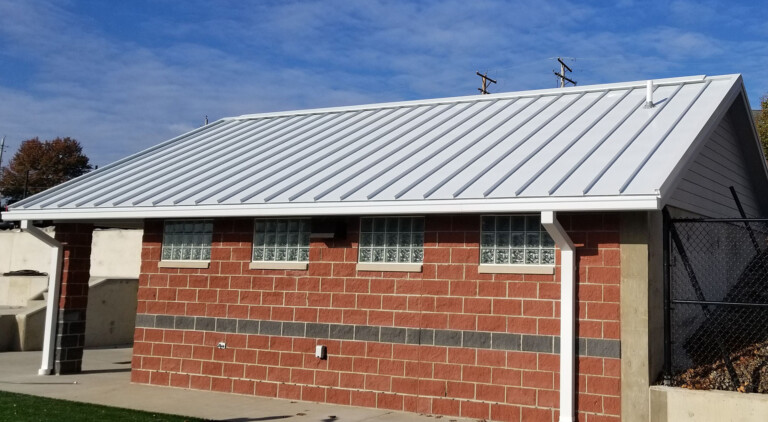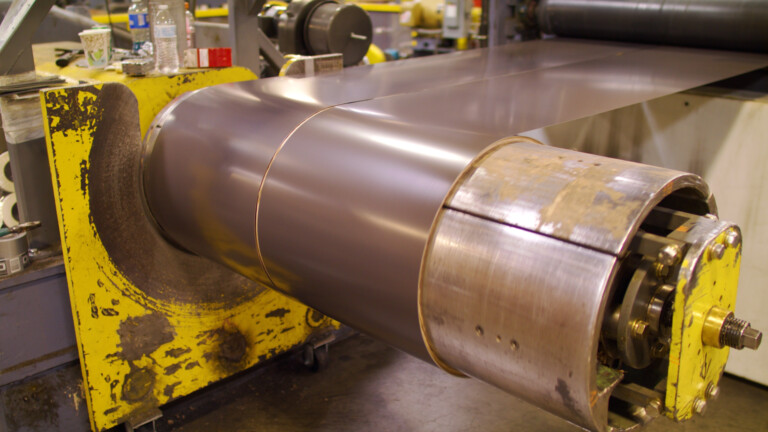Buying a Metal Roof? Here Are the 8 Best Considerations to Remember
Once you know you want to purchase a metal roof, it's critical to become educated about the buying process so you can choose the best metal roofing contractor.
So you’ve done all your research and officially decided that you want to buy a metal roof for your home or business.
That’s a great start…but now what?
The next step in the process is to find and ultimately choose the right metal roofing contractor to complete the project. But before you come to that decision, there are some key considerations to keep in mind prior to making a purchase
At Sheffield Metals, we’ve helped hundreds of homeowners during the roof purchasing process, so we know how important it is that you make the best and most well-informed decision. Especially because this purchase involves something that protects you, other people, your belongings, your investments, and more.
In this article, expect to discover:
- The top eight considerations to remember when buying a new metal roof.
- Why these considerations make a difference.
- Recommendations to help you along throughout the buying process.

Consideration #1: Don’t Go Over Your Budget
It’s easily one of the most important aspects to remember when you go to buy a new metal roof: Your budget.
Luckily, it’s pretty easy to discover if you have budgeted enough to cover the cost of a metal roof, as it’s typically two to three times more than a shingle roof as a one-time cost. So once you know you can afford a metal roof, let’s get into some budget specifics.
Know How Much You Can Spend on New Roof
There’s a pretty big difference between how much money you have to spend on a metal roof versus how much you are willing to spend on one. Here’s our advice: Be realistic with how much you are willing to spend.
You want to get the most out of your money, but you also don’t want to spend money you don’t have or don’t feel comfortable spending. When determining an amount:
- Take a detailed look at what you’re already paying in bills or other regular costs and how adding the cost of a metal roof will impact your available funds.
- Determine how much money you can and are willing to spend.
- Prioritize the core necessities of the project, such as the metal panels and the underlayment, that are required for a functional metal roof and can’t be cut from the budget.
- Make a “good, better, best” list of additional items that you want.
- Pick the option/amount you feel most comfortable paying.
Know What Makes a Roof Cost More
When you’re making the list of core essentials, which should be specific to your needs and wants, knowing what could affect the cost will help you decide.
Factors potentially affecting the cost of an installation:
- Order specifics
- Panel width, paint system type, panel profile, metal material, metal thickness, etc.
- Accessories required
- Clips, fasteners, underlayment, sealant, pipe boots, etc.
- Size of the roof
- Project location
- Customized items
- Engineering
- An engineered system, engineered components, engineer review, stamps, or calculations
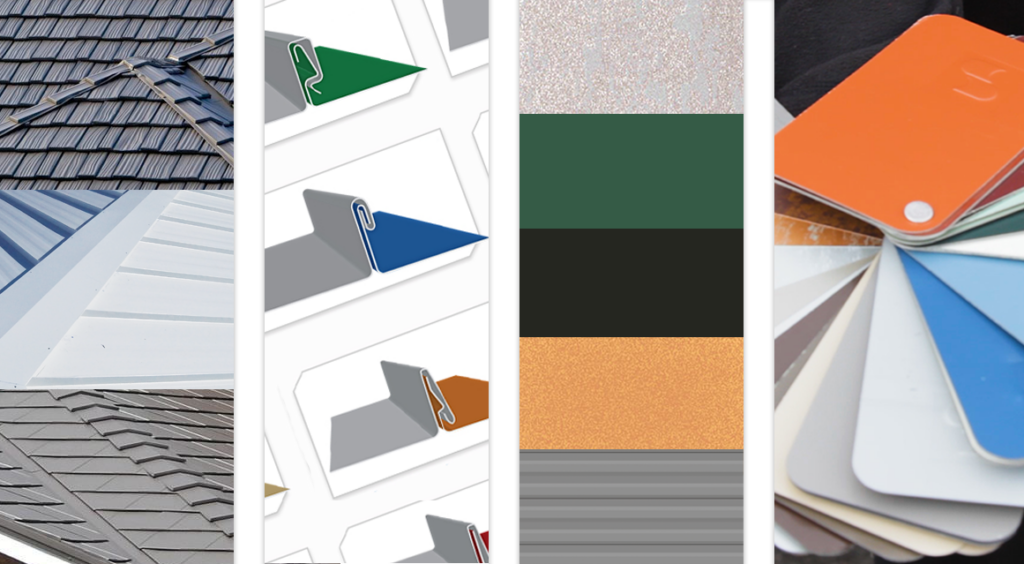
Potential after-the-fact costs:
- Repairs
- There are ways to avoid potential problems with metal roofing, most of which revolve around choosing the right installer.
- Additions
- This includes adding solar panels, swamp coolers, skylights, or other additions requiring additional flashing materials or mounting equipment (S-5!).
- Home/building insurance cost fluctuation
- While metal roofing insurance benefits exist, there is also the potential for drawbacks. It’s true that some homeowners could get a break on premiums because metal roofing is less likely to damage, but it could also be more expensive because the roof itself is worth more and would increase replacement costs for the insurance company.
- Before you buy a metal roof, consult with your insurance company to ensure they will be giving you the true value of a replacement roof if a claim must be made. If you don’t feel comfortable doing this on your own, there are contractors who will deal with insurance companies on behalf of the homeowner.
Stick to Your Budget
Going slightly above or below your budget is normal, but once you start adding pieces, parts, and customizations to the roof, don’t be too surprised when the price increases beyond what you were expecting to pay. If you come to a point where you are too far over your budget, call a meeting with your contractor to discuss ways to cut back on costs.
Consideration #2: Determine What to Do With Your Old Roof
If you’re doing a total roof replacement, there are several different options for what you can do with your old roof. You might be able to choose what happens with your old roof, or it could be up to the contractor, as they are often well-versed in building codes and what can/can’t be roofed over.
Option #1: Tear-off & Replacement
Tear-off is pretty self-explanatory: You take off the old roof, whether it be shingles, metal, or otherwise, and completely replace it with the new metal roof. This option could potentially add to the cost of installation because it’s labor-intensive and takes more time to do.
Option #2 – Sub-Purlin Retrofitting
Sub-purlin retrofitting involves putting a new metal roof over an existing roof system. This practice, which doesn’t open the building up to the elements, is typical in structural metal roof systems because it involves open framing (no roof deck). New purlins are designed to install over the existing roof and into the structural purlins of the building, often giving the roof structure additional strength, which the new metal roof will be attached to.
Option #3: Stick-Framing Retrofitting
This is typical when a building owner or architect wants an overall design change, so they go from a flat roof design to a pitched roof. Often, they can achieve this without moving the structure’s HVAC or mechanical or plumbing while achieving their aesthetic architectural goals.
Option #4: Roofing Over Old Roof
Some contractors and municipalities will allow you to keep your existing roof, typically a metal or shingle roof, and will put the new metal roof over it. There are regions where you can have more than one or two roof layers, but there are also regions where you can only have one, so check with your contractor or local building codes administrator. Also, since many contractors offer workmanship warranties on their installation job, ensure that roofing over an existing roof won’t void or limit this warranty.
Consideration #3: Check with Your Municipality/HOA Before You Buy
Before you start getting quotes on a new metal roof, check with your municipality and/or your Home Owners Association (HOA) before you put down any money. There are some community organizations that don’t allow metal roofing to be installed on a new or existing home within their jurisdiction.
Common reasons include:
- Metal is often thought of as looking “industrial.”
- Metal can look inconsistent or go against the look or aesthetics of a neighborhood.
- Some municipalities consider some paint finishes to have a high glare.
- Specular Gloss – Defined as “…an optical property which indicates how well a surface reflects light in a specular (mirror-like) direction.”
We have an entire article dedicated to metal roofing and HOAs — click here to read it.

Consideration #4: Choose the Right Contractor(s) for You
Before you get quotes and bids from contractors, you’ll need to narrow down the contractors you feel comfortable choosing from. There’s no point in wasting time on getting a bid from a contractor that you wouldn’t feel comfortable hiring to do the job, no matter how low the price is.
How to Find the Right Roofing Contractor
There are contractors and installers who do great work installing metal roofing, and reputable manufacturers would be happy to point you in the right direction. At the same time, there are some contractors and installers who are inexperienced or unqualified to install metal roofing, which is why finding and ultimately choosing the right one is so vitally important.
To know if a contractor can perform to the highest standards possible, verify the following:
- They are licensed, insured, and in good standing with the building department.
- They have proven experience installing metal roofing.
- They are helpful, responsive, and able to answer your questions.
- They provide detailed explanations of available products and installation processes.
- They don’t require all costs to be paid 100% upfront.
- We recommend around 20% to 30% should be left to pay at the time of completion.
- They have been recommended by family, friends, or neighbors who have used them.
- If you don’t know anyone with a metal roof, look for reviews and recommendations on referral sites such as HomeAdvisor or Angi.
- You can also contact the metal manufacturer to ask if they have any referrals in your area
Best Questions to Ask a Roofing Contractor
For some assistance in choosing the right roofing contractor, make sure to ask these questions during your consultation:
- Are you a licensed roofing contractor?
- Do you have proof of workman’s compensation insurance?
- Do you have proof of liability insurance?
- Do you have photos or examples of jobs you’ve completed?
- How long does a typical project take?
- How will you protect my property, gutters, yard, and other items near my roof from damage?
- Who will actually be doing the installation? You, your workers, or sub-contractors?
- Who is my contact during the installation?
- Will you need access to my home throughout the installation?
- Does your bid/quote entail using the manufacturer’s standard details? If not, why?
- Why are you recommending this roof system? How will it work with my roof characteristics?
- What are the potential problem areas with my installation?
- How do you plan to address these? What are my options? How will it affect the price?
- Will the manufacturer offer assistance and troubleshooting?
- What kind of warranties are available?
Looking for a complete list of important questions to ask potential contractors? Download the 27 Questions to Ask During a Roofing Consultation checklist.
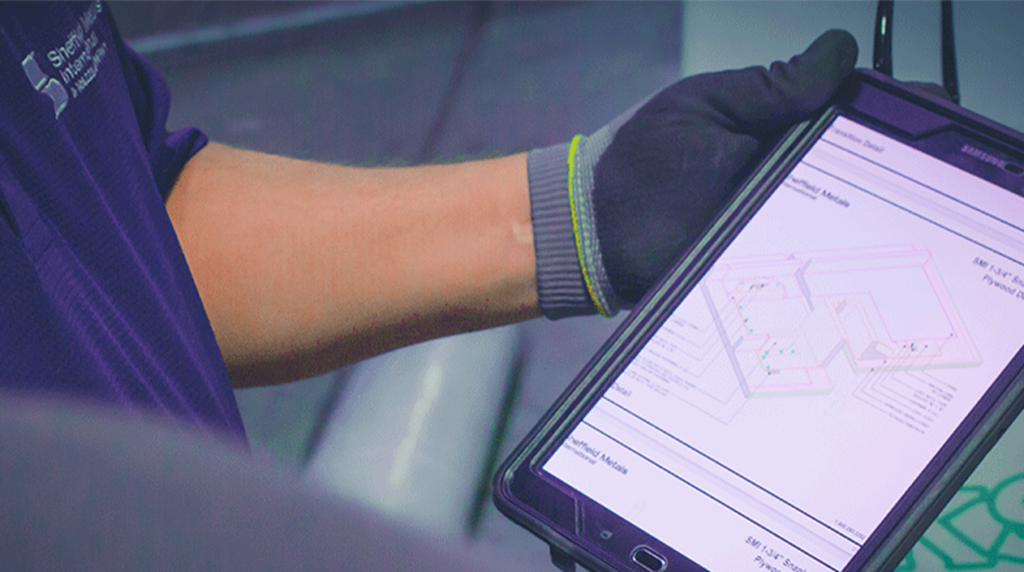
Consideration #5: Get a Variety of Bids or Quotes
Any time you’re shopping around for a high-price item with many different add-ons and options, you should always get more than one quote or bid on an item. So after you’ve met with the contractors, gone over product information, and asked a lot of questions, pick out a few contractors that you would feel comfortable getting quotes/bids from.
We understand that the process of shopping around for contractors and getting a variety of quotes can seem long, but it’s worth the effort to ensure your new roof performs to the best of its ability.
What to Look for in a Bid or Quote
The next step is analyzing the quotes you received from the narrowed pool of contractors. This is arguably one of the most important pieces of buying a metal roof metal roof. First and foremost, make sure everything about the project is spelled out in the quote. Then, take some time to review the bids and make sure the following pieces/parts are included:
- A full scope of the work
- Roof specs:
- Pitch/slope (low vs. steep slope)
- Square footage
- Layers
- Number of flashings and penetrations
- Material costs:
- Cost of metal + quantity/size
- Cost of underlayment + quantity/size
- Cost of fasteners, rivets, or screws + quantity
- Cost of clips or clamps + quantity
- Cost of plywood or other roof deck materials + quantity/size
- Cost of flashings or pipe boots + quantity/size
- Cost of sealants or butyl tape + quantity
- Any other material required (drip edge, gutters, etc.)
- Labor costs:
- Tear-off cost per hour + number of hours to complete tear-off
- Installation cost per hour + number of hours to complete installation
- Includes panel, roof deck, accessory, and drip edge installation, as well as other materials that require installation time.
- Always ensure the contractor uses manufacturer installation details.
- Available warranties
Be wary if a bid/quote is missing one or more of these parts. If you feel like the quote is missing pieces or is difficult to understand, contact the contractor and have a conversation about it.
Consideration #6: Don’t Always Accept the Lowest Bid
You might be drawn to a bid because it’s the lowest one you’ve received. Sometimes taking the lowest bid is perfectly fine, but there are times where it may spell trouble and lead to unnecessary problems.
Why a Metal Roofing Bid Might be Low
Let’s discuss good and bad reasons why a bid might have come in at such a lower price than the others:
OK reasons for a bid to be low:
- It’s a smaller business with less overhead costs.
- The job or project isn’t complex.
- No tear-off of the old roof is needed.
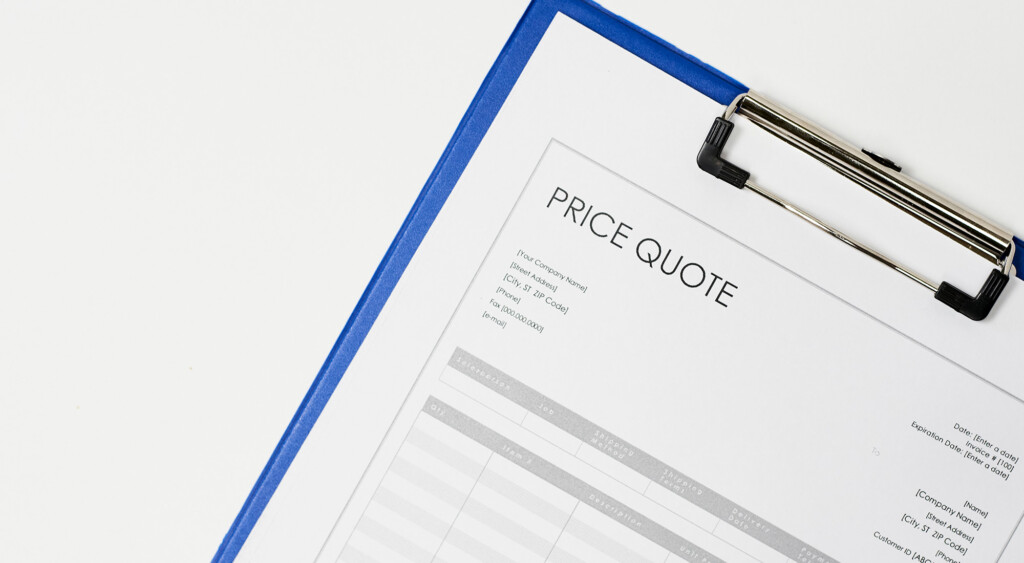
BAD reasons for a bid to be low:
- They’re not using quality materials.
- They forgot something on the bid (i.e., a roof section, penetrations, materials).
- They’re using low-wage or less-qualified workers.
- They’re inexperienced and/or a newer business.
- If you require specific engineering for a system and they can’t validate they are providing one.
As we mentioned, sometimes a lower bid turns out to be a fine option that results in a well-performing metal roof. We recommend doing your research if someone does come in at a low bid by checking with references, referrals, customer reviews, and the contractor.
Which Metal Roofing Bid Should I Take?
There’s no right answer for everyone on the best bid to take. Just remember to choose the contractor who:
- Gives you a precise bid with the full scope of work to be done.
- Uses manufacturer-provided installation details.
- Answered all your questions to your liking.
- Provided proof of metal roofing installation experience and knowledge.
- Most importantly: Choose a contractor who you trust to complete the job.
Consideration #7: Know the Price of a Metal Roof Can Change Quickly
Once you have accepted a bid on the project, know that the price can quickly change at no fault to anyone. There are often unforeseen problems or additions, such as added plywood needed for a roof deck or another few feet of drip edge material needed, not covered in the quote and might need to be paid out of pocket. Discuss how these situations will be handled by your contractor before this occurs.
Also, if you’re buying a metal roof because of an existing issue such as a leak, expect the price of a metal roof quote to be higher than usual. These problems will need additional work to be performed to remedy the problem before any new roof can be put on.
Consideration #8: Know What Is or Isn’t Covered by a Warranty
Warranties are a huge selling point of metal roofing and can offer peace of mind for many consumers that their new metal roof will perform as well as promised. It’s important to understand the different elements a warranty consists of, including how to apply, who or what company is offering the warranty, the duration of the warranty, inclusions or exclusions, and who to contact if a claim needs to be filed.
Types of Metal Roof Warranties
Paint – A metal roof paint warranty covers certain levels of degradation of the paint system applied to the substrate. This warranty is typically offered by the manufacturer on behalf of the paint company, such as Sherwin-Williams.
Substrate – This type of warranty applies to the metal making up the core of the coil or sheet and often states that the substrate will not rust or degrade through the material for a specific duration of time. These are typically offered by the manufacturer.
Weathertight – Weathertight warranties cover leaks in a roofing system for a specific time period. Weathertight warranties typically come from the manufacturer and are available for non-residential structures to ensure longtime system integrity.
Workmanship – Workmanship warranties are offered by roofing contractors and cover installation errors that could lead to problems or failures of the system. Having this warranty ensures that the contractor will come back and fix the issue at no additional charge. If a contractor is not willing to offer a workmanship warranty for at least two years, you might want to think twice about choosing them.
All warranties should come with a detailed outline of what is or isn’t covered, which you should keep and reference should you ever have questions.
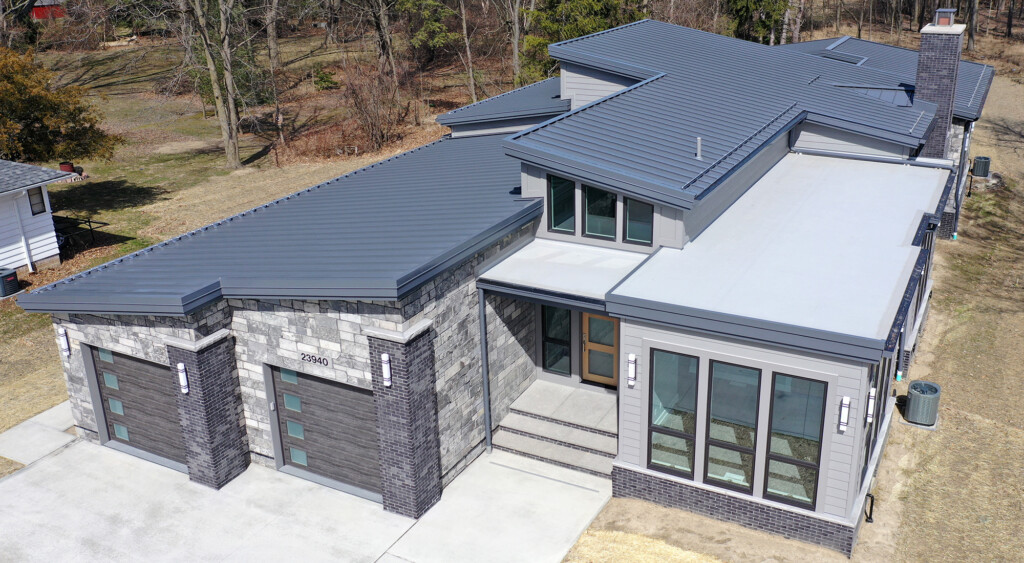
Final Thoughts on Metal Roof Buying Considerations
It sounds like a lot of information to keep in mind, but the eight considerations we laid out will make a difference when you go to buy a metal roof.
Remember:
- Try your best to stay on budget, and understand that the price of a metal roof can quickly change.
- Make sure your municipality or HOA allows metal roofs.
- Know the important questions to ask during contractor consultations.
- Get various bids from reputable and qualified contractors, but don’t always take the lowest bid.
- Know the offered warranty options and what is covered by each one.
At Sheffield Metals, we know how important it is to make the right buying decision the first time around, which is why want to help guide you through the process to ensure success.
We’re ready to answer your questions and give you recommendations — contact us today to speak with one of our metal roofing experts!
